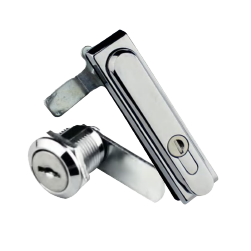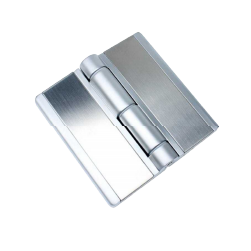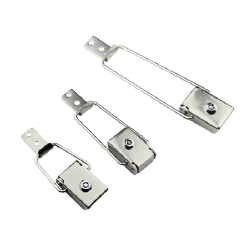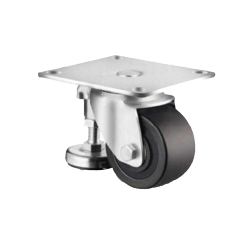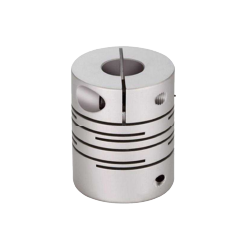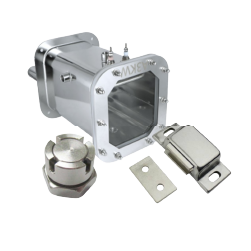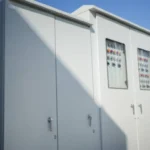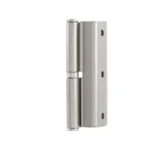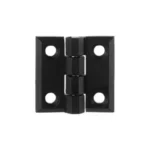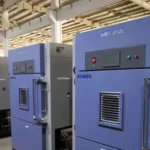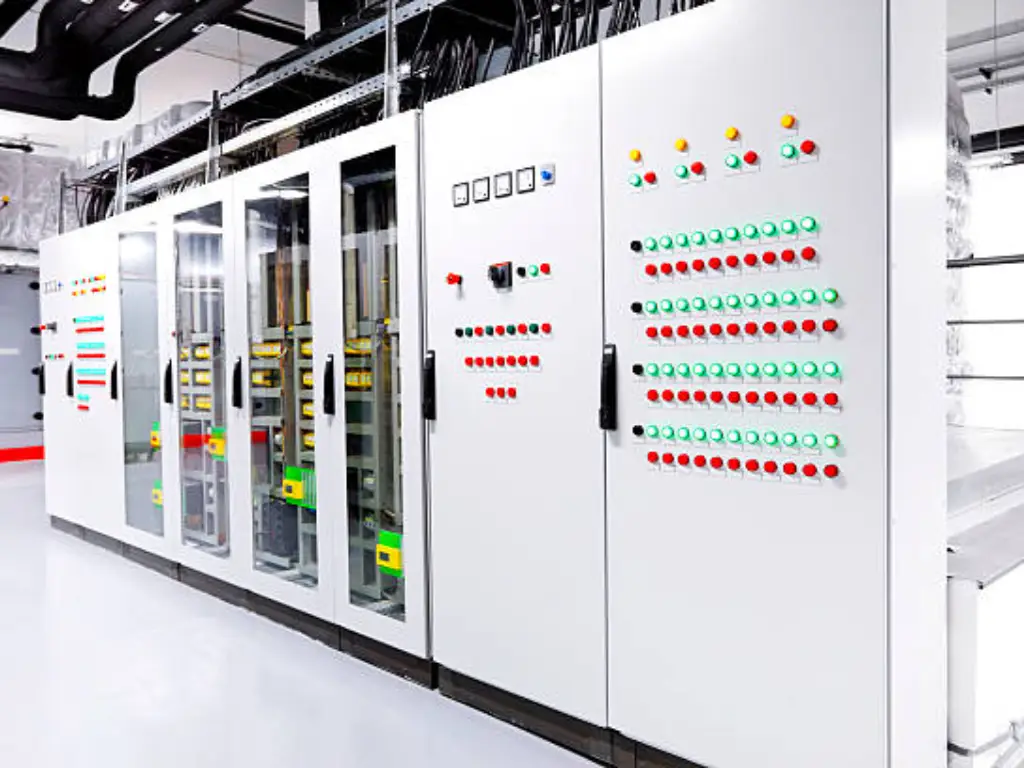
The integrity of any electrical system is in its enclosure, which is a very underrated component that plays a very important role in safeguarding delicate electronics against operational risks, environmental risks, and physical damage. An enclosure that is specified correctly will be reliable and last long, but a wrong decision will be disastrous. The guide is a detailed guide to learning the design process, including the basic principles of the process, such as sizing, material choice, and industry standards (NEMA/IP). Next, we will move to the more sophisticated problems of challenging industrial conditions and provide engineers and designers with the expertise to develop robust solutions that will protect the vital elements.
Key Considerations Before You Start
A careful analysis of the intended use must be done before any dimension is calculated or material specified. All the design decisions are determined by the operational environment. This preliminary investigation plays a crucial role in ensuring that the failure to consider one aspect may undermine the whole system.
Indoor vs. Outdoor Application
First, identify the position and type of enclosure. A large range of environmental factors, such as rain, snow, direct sun, and wind, have to be faced by outdoor installations. This requires a major emphasis on weather resistance, UV stability of materials, and strong sealing of water intrusion. On the other hand, an indoor unit can have other problems, including dust in the air due to a manufacturing process, dripping liquids, or high-pressure washdown in a sterile room.
Chemical and Corrosive Exposure
Then determine the existence of corrosive agents. Will the enclosure be subjected to industrial solvents, harsh cleaning agents, salt spray in a maritime environment, or other harsh chemicals? This is one of the main reasons behind the choice of material, since the corrosion resistance is paramount to avoiding structural failure at an early stage and securing the stability of the enclosure and its internal elements while effectively blocking radio frequencies. The response to this question will inform the decision on the use of coated carbon steel, aluminum, and certain grades of stainless steel.
Operational Temperature Range
Another important factor is the ambient temperature range of the operating environment for an electronic device. A foundry enclosure will be subjected to intense external heat, whereas an enclosure in a cold storage facility will have to work in sub-zero temperatures. This thermal stability is not only of the enclosure material itself, but also of the performance of gaskets (which may become brittle or degenerate) and the overall efficiency of any heat management systems.
A lack of adequate consideration of these underlying factors directly results in typical and expensive system failures, such as:
- Overheating: improper thermal control reduces the performance and significantly reduces the life of electrical components.
- Short Circuits: This is caused by the ingress of moisture or conductive dust due to inadequate sealing.
- Structural Failure: This is a failure caused by corrosion in the event of a mismatch between a material and a harsh chemical environment.
- Signal Interference: Vulnerability to electromagnetic interference (EMI), which may impair the operation of sensitive electronic equipment and regulatory compliance.
Sizing Your Enclosure for Success
The correct sizing of an electrical enclosure is a trade-off between current requirements, thermal management, and scalability, especially to protect sensitive electronic components. A small enclosure will cause instant issues with heat dissipation and accessibility to maintenance, whereas a large enclosure will result in unnecessary production expenses and the wastage of space. Sizing is done systematically to guarantee functionality and efficiency.
The computation starts with the internal components of industrial control panels. Develop a detailed bill of materials (BOM) that contains all the parts to be installed in the enclosure: PLCs, power supplies, terminal blocks, circuit boards, DIN rails, and transformers. Identify the actual size of each component and determine the total area that it will cover on the subpanel or backplate. It is important to consider not only the components themselves but also the required safety clearance between them as required by industry standards to avoid electrical arcing and allow safe access.
Second, you should consider thermal management for electronic enclosures. The main enemy of electronic components is heat. The enclosure should have enough space to enable natural air convection. Another rule of thumb is that there should always be at least 25 percent of free space after all the components have been mounted. When the heat output of the internal components is greater than the passive cooling capacity of the enclosure, active cooling methods such as fans, heat sinks, or air conditioning will be necessary. These machines take up physical space and have to be factored into the original sizing calculation.
Lastly, think of the possibility of growth in the future, especially in consumer electronics. Additional space is much cheaper to include in the original design than to substitute a whole enclosure at a later stage. A wise design approach is to design with an extra 15-25% of space to allow future components, changes or upgrades. This vision makes the enclosure a viable component of the system during its planned lifecycle.
Selecting the Right Enclosure Material
Enclosure materials selection is a critical decision that directly affects the durability of the unit, its weight, cost, and performance against the environmental factors. The choice has to be a conscious act, depending on the application requirements that have been determined during the preliminary evaluation. Both materials present a profile of their strengths and weaknesses.
Carbon Steel: Widely used in general-purpose indoor use because it is very strong mechanically and cheap. It can be easily made into tailor-made enclosures. It has a major weakness of low corrosion resistance and therefore cannot be used in wet or chemical-contaminated environments unless a durable powder coating is applied.
Stainless Steel: Highly resistant to corrosion and is therefore the choice when it comes to the high-demand industries like food processing, medical equipment, and marine.
- 304 Stainless Steel offers a fair degree of corrosion resistance in the majority of washdown and outdoor conditions.
- 316/316L Stainless Steel contains molybdenum that provides it with better chloride and other severe industrial chemical resistance, and is necessary in chemical plants and coastal applications. It is an expensive raw material that is more expensive to manufacture.
The properties of aluminum that make it a desirable material include lightweight, resistance to corrosion, and good thermal conductivity, which helps in passive heat dissipation. It has a high strength-to-weight ratio, which makes it suitable for applications where weight is an issue. Telecommunications and portable test equipment enclosures are typically made of aluminum.
Polycarbonate, a form of plastic enclosure, is made by injection molding. It has superior impact resistance, moderate moisture resistance, and intrinsic resistance to UV radiation in stabilized grades. It is an electrical insulator, which may be a safety benefit. Nevertheless, it could be less thermally stable and resistant to chemicals than metals.
Fiberglass(Fiberglass Reinforced Polyester or GRP) offers a strong solution that is highly resistant to corrosion and chemicals, and therefore can be used as an alternative to stainless steel in most harsh conditions. It is light and tough, though it may be prone to delamination or fiber blooming due to UV exposure over time unless it is coated appropriately.
The following table provides a clear comparison of these common enclosure materials:
| Material | Relative Cost | Corrosion Resistance | Weight | Mechanical Strength |
| Carbon Steel | Low | Low | Heavy | Very High |
| 304 Stainless Steel | Medium | High | Heavy | Very High |
| 316 Stainless Steel | High | Excellent | Heavy | Very High |
| Aluminum | Medium | Very Good | Light | Medium |
| Polycarbonate | Medium-Low | Good | Very Light | High (Impact) |
| Fiberglass | Medium | Excellent | Light | High |
NEMA and IP Enclosure Ratings
In order to standardize the degree of protection afforded by an enclosure, two major systems are employed: NEMA ratings, which are set by the National Electrical Manufacturers Association in North America, and IP ratings, which are set by the International Electrotechnical Commission (IEC). These ratings are important in understanding regulatory compliance and enclosure suitability to the environment. Choosing the right standard requires understanding the core distinctions in the NEMA and IP ratings debate.
NEMA ratings encompass a wider scope of standards than IP ratings, such as ingress protection of solid objects and water, corrosion, and construction details. Common ratings include:
- NEMA 3R: Designed to be used outdoors. Shields against precipitation; not damaged by the external growth of ice in the enclosure. It is not resistant to windblown dust. (Roughly equivalent to IP24).
- NEMA 4: It is designed to be used either indoors or outdoors. Shields against blown dust and rain, splashing water, and hose-directed water. (Roughly equivalent to IP66).
- NEMA 4X: Provides the same level of protection as NEMA 4, but with a lot of corrosion resistance. This is the washdown environment standard, marine, and chemical plant standard. (Roughly equivalent to IP66).
- NEMA 12: Designed to be used in an indoor industry. Guards dripping non-corrosive liquids, falling dirt, and circulating dust. (Roughly equivalent to IP54).
IP ratings are composed of two digits. The initial number (0-6) represents the degree of protection against solid objects, starting with large body parts, to microscopic dust. The second number (0-8) shows resistance to water intrusion, dripping water to total, sustained submersion. The more the number, the greater the protection. An enclosure with an IP66 rating, such as one, is totally dust-tight (6) and can withstand strong jets of water (6).
Choosing Hardware for Security, Sealing, and Longevity

Although the enclosure body forms the main shield, its hardware determines its functionality, i.e., its ability to close, fasten, and survive. Latches, hinges, handles, and locks are not accessories, but rather active mechanical parts that are the most frequent failure points in an electrical enclosure design. The choice of the appropriate hardware is one of the most important engineering processes that directly influences the security, sealing performance, and long-term reliability.
This is where the collaboration with the expert in industrial hardware, like KUNLONG, will be a strategic benefit. KUNLONG offers solutions that are aimed at addressing three basic challenges with a strong emphasis on the engineering and production of these essential elements:
1. Guaranteeing a Perfect Seal: It is of no value to have a high IP or NEMA rating when the door does not fit perfectly against the gasket. This is done by using high-quality compression latches and multi-point locking systems, which exert even pressure all the way around the door perimeter. This design will be able to guarantee that the seal will not be broken and the dust and water will not enter the device during thousands of open-close cycles.
2. Delivering Strong Security: The initial defense against unauthorized access is the hardware. The difficulty lies in the fact that it is necessary to choose locking mechanisms that can be not only resistant to tampering and forced entry, but also adapted to the working conditions. This may be as simple as key-locking wing knobs all the way up to more advanced electronic access handles that may be incorporated into a site-wide security system, which would not only offer physical deterrence but also an electronic audit trail.
3. High Vibration and Mechanical Stress Management: Railway, transportation, and heavy industrial enclosures, such as CNC machining or stamping presses, are exposed to vibration and may experience physical impact at any time. This continuous mechanical force may lead to loosening of standard fasteners and hardware with time, which undermines the seal and integrity. The answer is in the specification of the hardware designed to work in such conditions. Examples of high-performance compression latches include constant pressure to counteract loosening under vibration. On the same note, hinges should be strong and heavy-duty to avoid the sagging of the doors and also to make the locking mechanism perfectly aligned. The hardware should be made to not only fit, but to withstand the particular dynamic forces of the application.
Taking the hardware selection as a design process, engineers can avoid the most widespread failures and make the enclosure work successfully during the whole service life.
Ensuring EMI/RFI Shielding and Sealing Integrity
In addition to shielding components against physical risks, a major purpose of most contemporary enclosures is to shield delicate electronics against unseen risks: electromagnetic interference (EMI) and radio-frequency interference (RFI). This is the ambient electronic noise produced by all things, such as power lines, motors, wireless signals, etc., and can impair performance, corrupt data, and even lead to a complete failure of the device. Good shielding is thus a design consideration in applications in telecommunications, medical devices, and industrial automation.Achieving this requires a deep understanding of the principles behind effective EMI shielding.
This protection principle is the Faraday cage, a continuous conductive shield that encloses the components. The Faraday cage is naturally constructed of a well-designed metal enclosure, though its shielding integrity depends only on the weakest point. To create an effective shield, it is necessary to pay attention to two aspects:
1. Electrical Continuity: The shield must be electrically continuous. Any discontinuity or break in the conductive path may serve as an antenna and may leak in or leak out interference. This implies that all the panels, doors, and access points should be electrically bonded to the main body of the enclosure. This is commonly done by use of conductive gaskets, usually of wire mesh or conductive elastomers, which are fitted at the door interface and other openings to seal any possible gaps in the conductive shield.
2. Sealing Integrity to Shielding: Sealing integrity in this case is not only about the ability to keep dust and water out; it is about completing the circuit of the Faraday cage. The biggest possible breach is the door. A multi-point latching system is essential to provide a constant and consistent pressure on the conductive gasket to provide a continuous and low-impedance path between the door and the enclosure body. Any other openings, including cable or ventilation, should also be covered with shielded cable glands, honeycomb vent panels, or other special elements that permit passage without compromising the shield.
Lastly, the enclosure should be well grounded. The Faraday cage prevents interference by conducting it around the outside of the enclosure. A safe grounding connection offers a safe route through which this captured energy can be dissipated so that it does not accumulate and re-radiate, thus rendering the shield useless.
Key Design Challenges for Critical Infrastructure Cabinets
The design of cabinets to house critical infrastructure such as data centers, power grids, and telecom networks is a special category of high-stakes challenges in which failure of the system is not an option. The emphasis is not on the mere protection but on the comprehensive strategy that covers the following fundamental problems:
- Multi-Layered Security: The design should not just be a mere lock but should be integrated to offer protection against advanced threats. This includes reinforced building, multi-point locking, and in many cases, electronic access control with monitoring and audit trails.
- High-Density Thermal Management: These cabinets contain highly concentrated equipment with high power that produces intense and concentrated heat. The issue is to design highly efficient and reliable closed-loop cooling systems that can be used to effectively avoid thermal runaway and guarantee optimum performance.
- Long-Term Reliability: Since the service life required is usually in decades, all parts should be chosen with the highest durability. The design should be focused on reducing maintenance and employing hardware, including hinges and seals, that has been proven to withstand environmental stress and high-cycle usage without failure.
- Scalability and Future-Proofing: The technology within these cabinets is changing at a high rate. One of the main issues is to develop a modular and flexible platform with the possibilities of adjustable racking and movable cable entry points so that the enclosure could accommodate future equipment upgrades without the need to replace it with an expensive one.
Your Essential Electrical Enclosure Design Checklist
This checklist provides a structured framework to guide the design process from conception to completion.
- Phase 1: Requirement Analysis
- Define Application: Indoor or outdoor use?
- Assess Environmental Factors: Temperature range, humidity, exposure to solar radiation.
- Identify Chemical/Corrosive Agents: Salt spray, oils, cleaning solutions, etc.
- Determine Regulatory Compliance: NEMA, IP, UL, industry-specific standards.
- Evaluate Physical Stresses: Vibration, shock, or impact risks.
- Assess Security Needs: Level of protection against unauthorized access.
- Phase 2: Component and Material Selection
- Finalize Bill of Materials (BOM) for all internal components.
- Calculate Component Footprint and Clearances.
- Select Enclosure Material based on environmental and application needs.
- Specify NEMA/IP Rating that meets or exceeds requirements.
- Phase 3: Layout and Thermal Planning
- Plan Component Layout for logical wiring and maintenance access.
- Calculate Total Heat Load (in Watts) from internal components.
- Determine Thermal Management Strategy: Convection, forced air, or active cooling.
- Finalize Enclosure Dimensions, including space for thermal management and future expansion.
- Plan Cable Management: Cable routing, entry points, and strain relief.
- Phase 4: Hardware and Accessories
- Select Hinges rated for door weight and environmental conditions.
- Choose Latches/Locks that ensure proper seal compression and security.
- Specify Gasketing Material compatible with temperature and chemical exposure.
- Select necessary accessories: DIN rails, window kits, grounding studs.
- Phase 5: Review and Verification
- Conduct Design Review to ensure all requirements are met.
- Verify Material Certifications and Component Datasheets.
- If prototyping, conduct tolerance tests and IP/NEMA verification tests.
- Ensure final design documentation is complete and accurate.
Conclusion
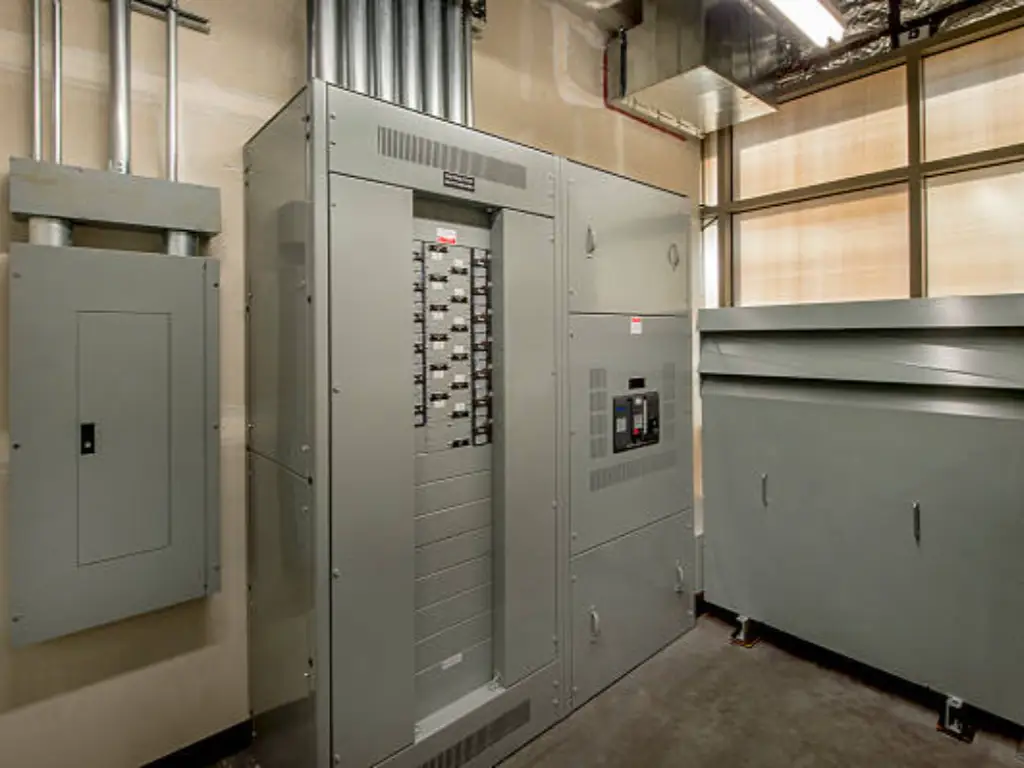
An effective electrical enclosure design is a product of a stringent, systematic procedure. It starts with a thorough knowledge of the application environment and progresses through a conscious decision-making process in terms of sizing, material science, and adherence to the set industry standards. In the case of applications in the demanding industries, as we have seen, standard solutions are not always sufficient, and the design is pushed into specialized and custom-engineered solutions.
The final dependability of an enclosure is a combined quality, in which the strength of the sheet metal, the resistance of the powder coating, and the integrity of the hardware all come together to create one strong system. This comprehensive attitude, the combination of fundamental principles with environmental adaptation and excellent choice of components, is what makes a plain box a fortification of vital electrical systems.
To guarantee that your next project will be of the highest standards, collaborate with the experts in industrial hardware who are aware of these complexities. The wide range of 3D models and the first-hand experience of the KUNLONG engineering team can provide engineers with an easy way out of a challenging task to a strong, stable, and safe final product.

